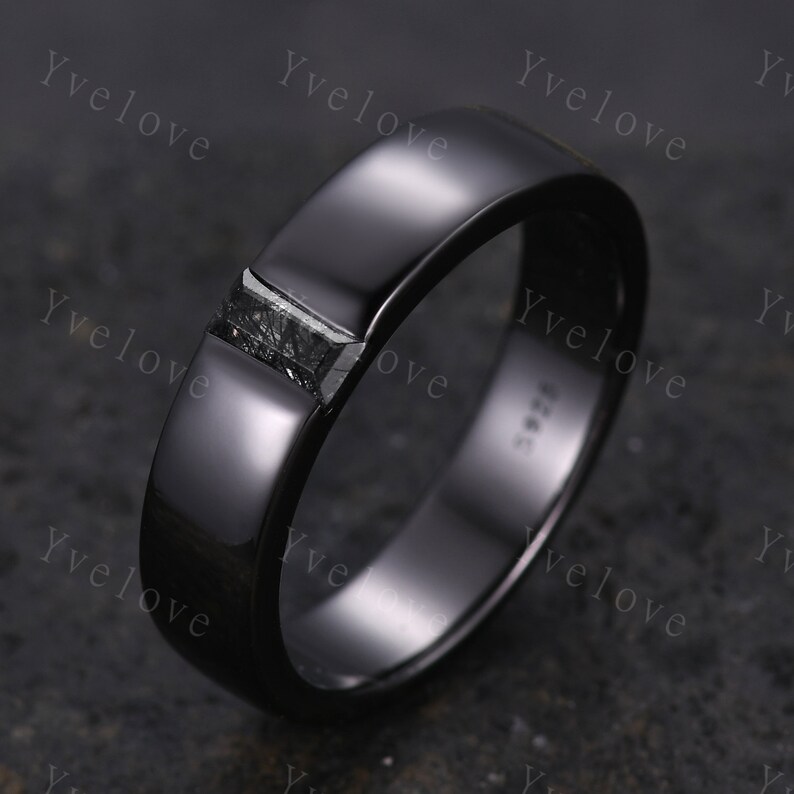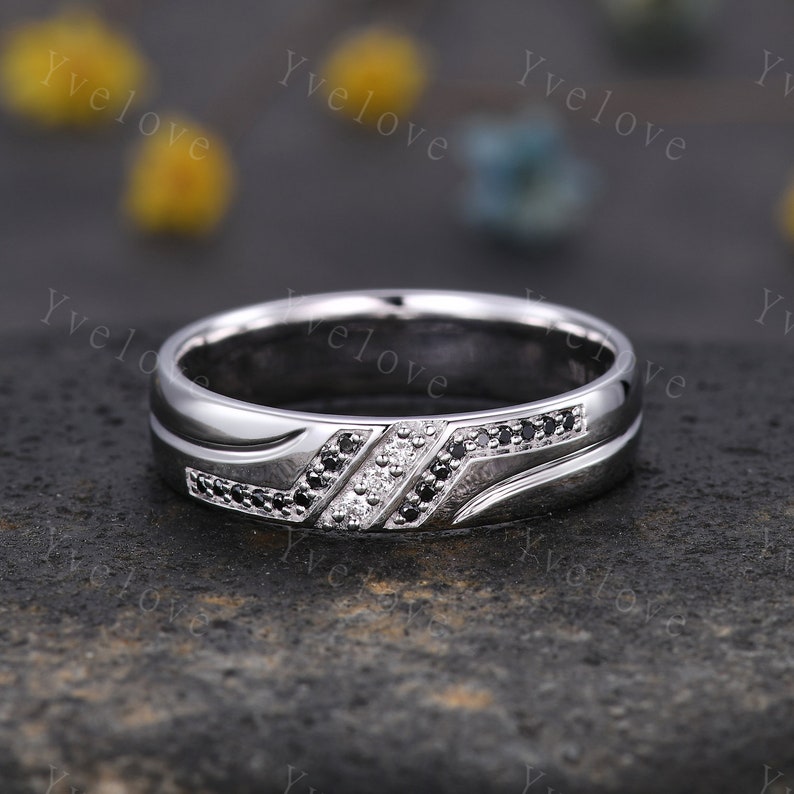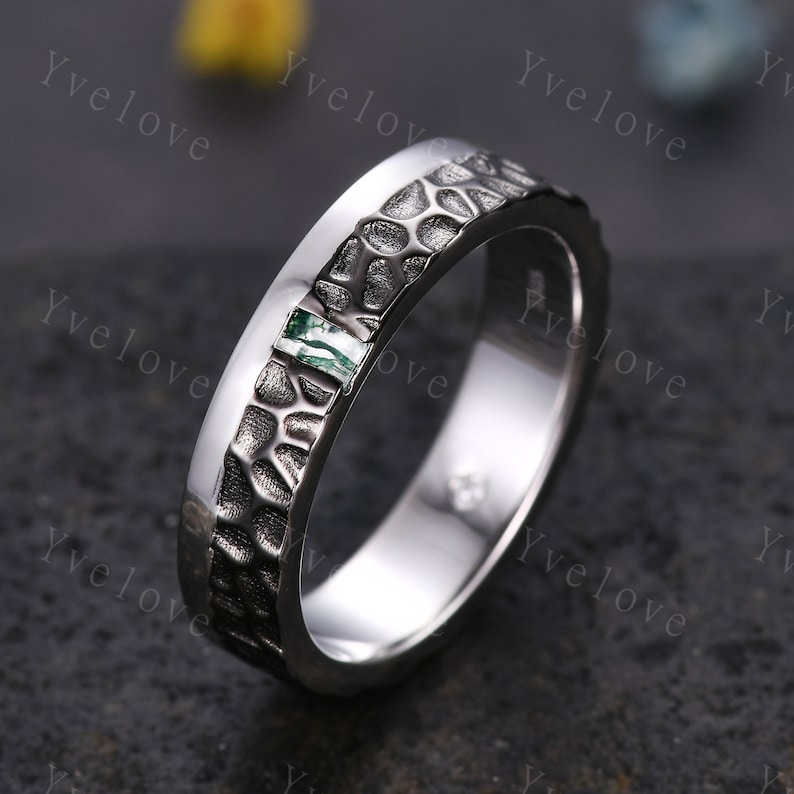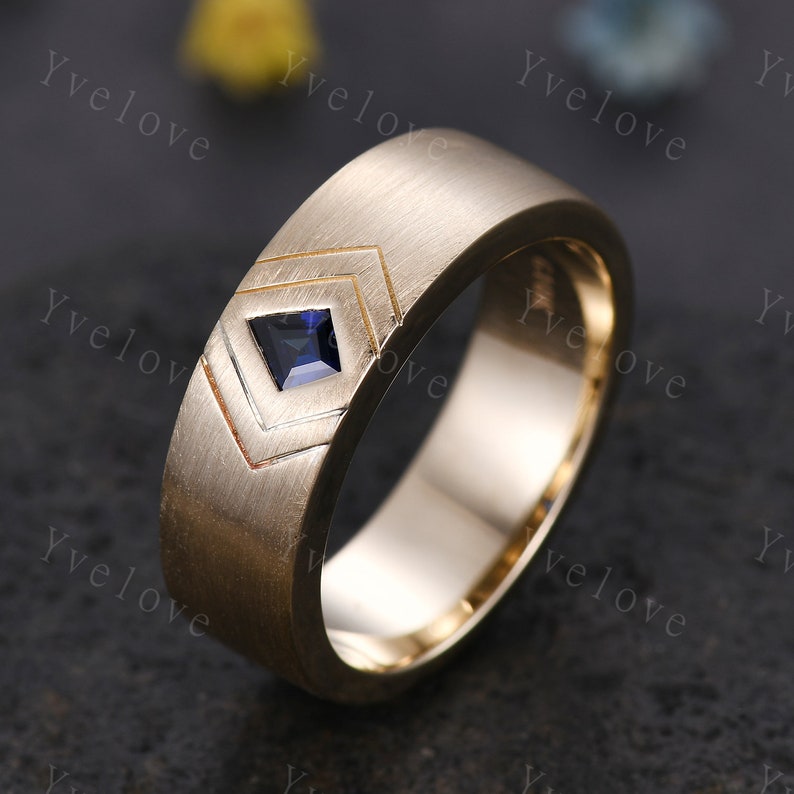The journey to the wedding day is filled with important milestones, one of which is selecting wedding bands. The tradition of using wedding bands dates back to the ancient Egyptians, who crafted rings from plants growing by the Nile to symbolize eternity. This act was later adapted into Christian and Jewish marriage rituals, the custom originally involved only the bride receiving a ring. Today, however, both partners exchange rings as enduring symbols of their love and commitment. The essence and significance of this time-honored tradition remain as meaningful now as they were centuries ago. As the big day approaches, choosing the right ring is a beautiful way to honor this legacy.
What is the History of Men’s Wedding Rings?
Brides have worn wedding rings since ancient times, but it's a relatively recent tradition for grooms, gaining prevalence only in the past century. 'Gimmel' rings, featuring two interlocking bands, were worn by European couples during their engagement in the 16th and 17th centuries. At the wedding, the man would transfer his band to his bride's finger, joining them as a complete set. Men's wedding rings entered the mainstream through the efforts of the jewelry industry, but their initial introduction in the late 19th and early 20th centuries was unsuccessful, largely due to economic constraints caused by the Great Depression.
World War II marked a turning point, with men's wedding bands becoming a symbol of connection to loved ones left behind during service. These rings were modest due to material restrictions, often engraved with names, lighter in weight, and lower in gold quality. In contemporary times, men's wedding bands have evolved into a diverse spectrum of styles, sizes, and colors. Although many men still prefer understated designs, the array of available materials and customization options now allows for greater creativity in selecting the ideal ring.
What Do Men’s Wedding Rings Symbolize?
The wedding ring stands as a testament to the enduring commitment and affection shared by a couple, a mutual promise to love and cherish each other for all time. The circular design of these rings holds deep meaning, representing the notion of endlessness, just like the concept of infinity. It represents unending love, as it should be.
Which Finger Should Men’s Wedding Rings Be Worn On?
Traditionally, the wedding ring is worn on the fourth finger of the left hand, a practice that comes from the ancient belief that a vein in this finger runs straight to the heart. Yet, cultural variations exist, with some European traditions favoring the right hand for wearing a wedding ring. Ultimately, the decision on which hand to wear this symbol of love rests with the individual or the couple’s cultural customs.
Who Buys The Men’s Wedding Rings?
In matters of tradition, it has been customary for the bride, possibly with her family's support, to be responsible for purchasing the groom's wedding ring. This convention presumes a traditional binary view of marriage, involving one woman and one man. A more inclusive perspective suggests that each partner should buy the other's band, reflecting equality in the relationship.
However, modern couples are increasingly setting their own rules when it comes to financing wedding rings. It's not uncommon for the cost to be divided between the couple. This makes practical sense for those who have already united their finances before marriage, or for those who are shouldering the financial responsibilities of their nuptials jointly.
The approach to purchasing wedding bands is evolving to suit the unique dynamics of each relationship. The emphasis is on what feels right and fair for the couple and aligns with their financial setup and values. Whether a couple chooses to adhere to tradition, embrace a more modern arrangement, or find a personalized middle ground, the key is that the decision should resonate with both partners and their families. The sentiment behind the rings—commitment and love—remains unchanged, even as the methods of acquiring them adapt to the times.
What Is The Best Metal For a Men’s Wedding Rings?
Gold remains a timeless choice for rings, valued not only for its beauty but also for its symbolism. However, practicality is crucial—the metal must be durable. Pure gold, at 24 carats, is often too soft, leading many to prefer 18 or 14 carats for a blend of resilience and elegance. For those who favor silver's aesthetic, white gold offers a fantastic alternative, which less prone to wear and tear.
Rose gold, with its warm hue, is becoming a favorite for men, particularly for those engaged in rigorous work, ensuring longevity and enduring beauty.
Meanwhile, titanium has emerged as a favored material for its lightness and strength, though its resistance to scratches is modest. It's comfortable for daily wear, yet those in physically demanding trades should be cautious—titanium's toughness can pose a challenge if the ring needs to be removed quickly during an emergency.
Conclusion
In conclusion, selecting a wedding band is a deeply personal choice that reflects individual style and lifestyle needs. While tradition once dictated that brides purchase grooms' rings, today's couples often share the expense and in some cases, the groom handles all of the buying. Gold, with its timeless appeal and rich symbolism, remains a popular choice of metal for wedding bands, though its carat weight is a consideration for durability and practicality. The emergence of white gold and rose gold caters to diverse tastes and functional demands, particularly for those engaged in labor-intensive work. Alternatives like titanium offer modern virtues of lightness and strength, albeit with considerations for those in certain professions.
The evolution of wedding band customs and materials mirrors the changing landscape of marriage itself, embracing the modern cry for inclusivity and flexibility while honoring the enduring promise that these rings represent. Ultimately, the decision on who buys the rings or what they are made of comes down to what best represents the couple's bond and shared values.

Mens Black Rutilate Quartz Wedding Band

5mm Moissanite Wedding Band

Mens Moss agate Wedding Band Baguette

Mens Alexandrite Opal Wedding Band Baguette

7mm Solid Gold Mens Kite Cut Blue Sapphire Wedding Band
